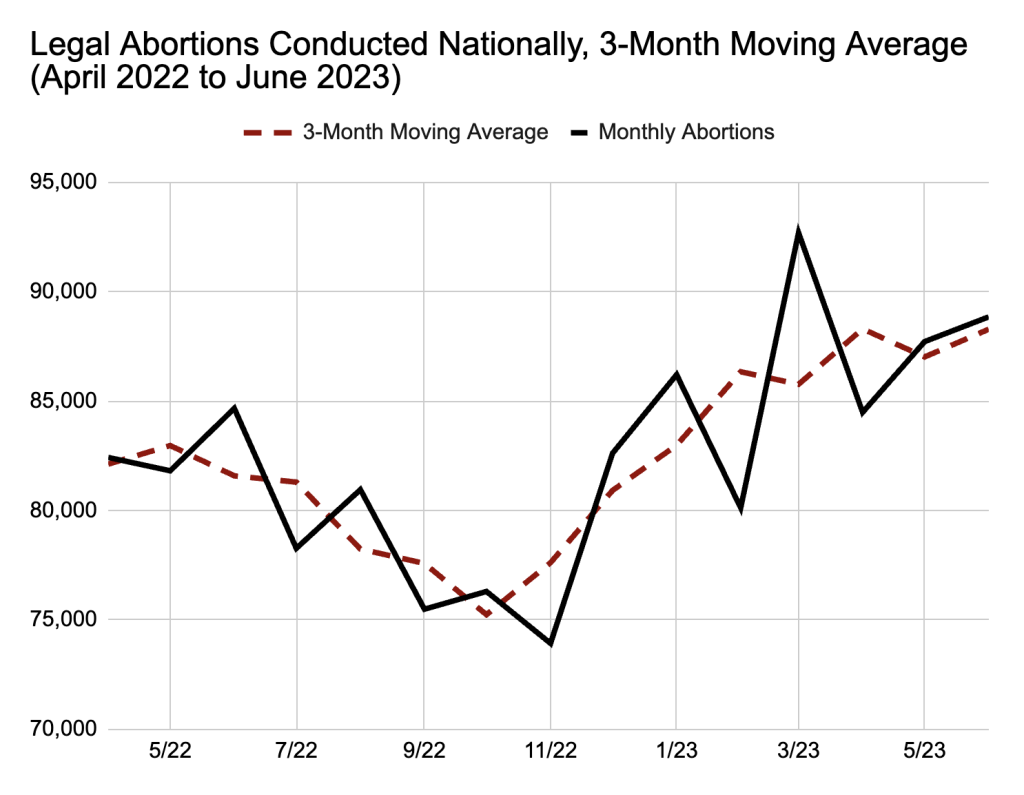I’ve written three times before on the question of how much the Dobbs decision, which gave states the power to tighten abortion laws, has actually reduced abortion in the US (I, II, III). The upshot of those pieces was that it has not reduced abortion very much (~2%) because the vast majority of the US population lives in states that have not restricted abortions and most individuals who live in restrictive states can travel to non-restrictive states or self-administer abortion through medication that is not that hard to get through the mail.
Today we got the latest dump of data on the question from the Society of Family Planning and the numbers continue to back up the claim that Dobbs has had a very small impact on aggregate abortions. In fact, according to the most recent SFP data, Americans are having more abortions now than they were prior to Dobbs.

The SFP count only includes legal abortions conducted by abortion providers. This means that it misses all of the abortions conducted through less formal means, such as through abortion pills received through the mail or purchased across the border. These types of abortions have also likely increased over this period.
One of the reasons I have been curious about this trickle of data is that, in the discourse on Dobbs, almost all of the takes fell into one of two buckets:
- Abortion is bad. Overturning Roe will reduce abortions a lot. Therefore Dobbs is good.
- Abortion is good. Overturning Roe will reduce abortions a lot. Therefore Dobbs is bad.
Both views have the same underlying assumption, which is that overturning Roe will reduce abortions a lot. But this has not proven to be true.
Insofar as overturning Roe has caused a variety of practical medical problems for individuals whose pregnancies take a turn for the worse, the “Dobbs is bad” conclusion remains viable, though for different reasons than that Dobbs is radically reducing the abortion rate.
But the “Dobbs is good” conclusion, at least when motivated by a desire to reduce abortion, is looking more and more untenable. Indeed, if one’s actual goal is to reduce abortions, it would appear that the decades-long project focused specifically on overturning Roe has been a disaster as it misallocated tremendous amounts of activist resources towards a policy lever that was not actually all that relevant to the national abortion rate.